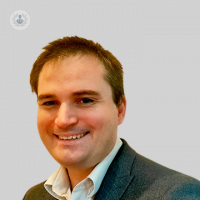Osteoporosis and your lifestyle: why is it important?
Written in association with:Osteoporosis is common, affecting hundreds of thousands of people in the UK. Every year, there are over 500,000 osteoporosis-related fractures, and every month, 1,100 deaths occur following a hip fracture. The impact of osteoporosis can be devastating, but it is treatable, and preventable. Here, Dr Francis Kynaston-Pearson gives us an overview of the facts.

How common is osteoporosis?
In the UK alone, one in two women, and one in every five men over the age of 50 will have osteoporosis. Every three minutes, because of osteoporosis, someone experiences a fracture. An estimated 3 million people in the UK suffer from osteoporosis. Each year, thousands of patients experience wrist, hip, or spinal fractures – and the numbers are on the rise
What is osteoporosis?
Osteoporosis happens when bones become gradually more fragile. This can progress painlessly, until a bone suddenly breaks. Our bones are made of a thick outer shell, which surrounds a strong mesh network filled with calcium salts, collagen (protein), and other important minerals. When the mesh becomes thin, it can break easily.
In the body, bones are constantly in a state of renewal. Old bone breaks down, and new bone is made. This happens more slowly in old age. In young people, the body makes new bone faster than it breaks down the old bone, so bone mass is increased.
Over time, this process slows down. We reach our peak bone mass level in our early 30s, and from them, bones break down faster than the body is able to create them.
Therefore, the more you produce bone and accumulate bone mass in your younger years, the less likely you are to develop osteoporosis as you age. Think of your body like a bank, saving bone for later in life.
What causes osteoporosis?
As well as a low peak bone mass, there are other factors that can contribute to the development of osteoporosis:
- A sedentary lifestyle (e.g lack of exercise, not being active)
- Drinking excess alcohol
- Smoking
- Low sun exposure and lack of vitamin D
- Low calcium levels
- Inflammatory conditions (e.g arthritis)
- Genetic variation
- Drugs, such as steroids
- Apoptosis (cell death)
- Menopause – particularly early menopause
Osteoporosis is also more common in women than it is in men. The most commonly affected areas in the body are the wrist, hip, and spine.
As the process is gradual, osteoporosis often displays no symptoms until a bone breaks. However, as bones become weaker, you may notice back pain, a slight loss in height over time, or a stooped posture.
Treatment and prevention of osteoporosis
There are ways you can help to reduce your risk of developing osteoporosis, and many start with your lifestyle.
Smoking is advised against, as it can increase rates of bone loss, and reduce levels of calcium absorption.
If you drink excess alcohol, this can decrease your bone formation and decrease the body’s ability to absorb calcium. Moderation is key, and more than one alcoholic drink a day is considered excessive. Alcohol can also increase your risk of falling, which is another risk factor for osteoporosis.
To prevent falls, wearing shoes with a low heel is recommended, along with making sure your general environment is as safe as possible. Tuck away wires or cables, and avoid having slippery surfaces around the home.
If you believe you are at risk from osteoporosis, you can be assessed using a DEXA scan, a type of X-ray that can measure your bone density.
Once osteoporosis has been diagnosed, there are various medications and therapies that can be prescribed by the doctor. After diagnosis, your specialist can recommend the best course of treatment.
Prevention, however, is always better than cure in this case. Your lifestyle and the decisions you make can affect your bones and their health. Factors such as nutrition, exercise, and daily habits can affect how likely you are to develop the condition. While osteoporosis is common, it can be helped, and you have the potential to prevent it.
If you would like to book an appointment with Dr Francis Kynaston-Pearson , simply visit his Top Doctors profile today,


